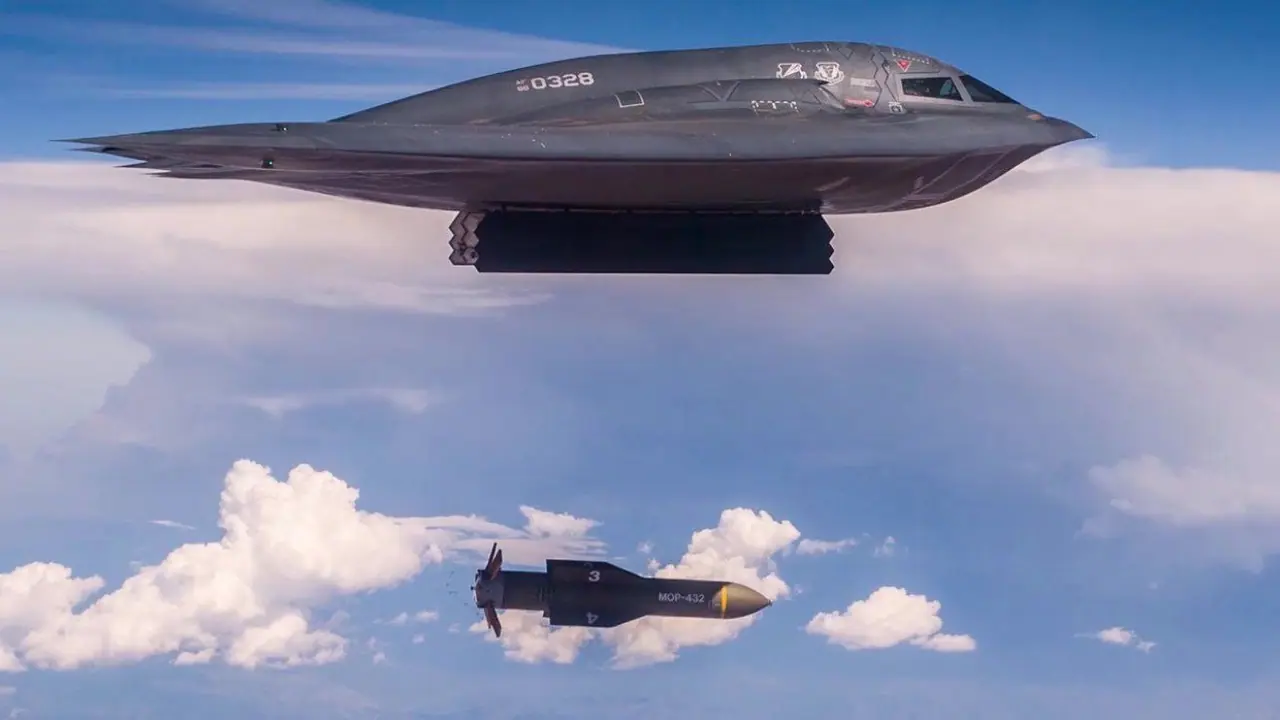Two days after Trump warned of military action, the US used B-2 bombers to destroy three of Iran’s top nuclear sites. The strike marked America’s direct entry into the Israel-Iran conflict, raising regional tensions.
New Delhi: Two days after President Donald Trump announced that they would attack Iran in two weeks, the United States bombed and destroyed three nuclear sites in the West Asian country amid Tehran’s threat of retaliation that could spark a wider regional instability.

The United States has now directly joined Israel’s effort to destroy the Iranian nuclear program.
In a speech from White House, Trump said: “Our objective was the destruction of Iran’s nuclear enrichment capacity and a stop to the nuclear threat posed by the world’s number one state sponsor of terror.”
“Tonight, I can report to the world that the strikes were a spectacular military success. Iran’s key nuclear enrichment facilities have been completely and totally obliterated.” The airstrike hit uranium enrichment sites at Fordow, Natanz and Isfahan.
US airstrikes on Iran
Here's how the United States successfully carried out airstrikes on Iran’s nuclear sites:
On June 21, the United States deployed its B-2 Spirit bombers for airstrike action in Iran, from its home – Whiteman Air Base at Missouri. An advanced aircraft known for being capable of delivering huge bunker buster bombs, the B-2 Spirit bombers flew a 44-hour mission, covering a distance of around 18,000 km and penetrated deeply inside Iran and conducted a series of attacks without being detected.
What is the B-2 Spirit bomber?
Equipped to carry America’s 30,000-pound GBU-57 Massive Ordnance Penetrator, the B-2 stealth bomber is designed to destroy targets, deeply-buried bunkers and facilities.
Currently, the United States has a fleet of 19 B-2 stealth bombers all of them are housed at Whiteman Air Base, southeast of Kansas City, Missouri.
A long-range stealth bomber, the B-2 stealth bomber is specifically designed to evade enemy radar detection.
Its flying wing design, composite materials and coating reduce its radar cross section, according to an updated Congressional Research Service report released June 18.
Weighing 160,000 pounds, the bomber has a wingspan of 172-feet, length of 69-feet, manned with two pilots and can hold two of the GBU-57s, also known as the "bunker buster" bomb. It costs around $2 billion.
When did the B-2 stealth bombers used earlier?
The B-2 bombers have been used in several operations by the United States. Just 8 months ago in October 2024, the US had attacked Iran-backed Houthi rebels in Yemen, using the same bomber aircraft.
The then US defense secretary, Lloyd Austin said the strike by the bombers “was a unique demonstration of the United States' ability to target facilities that our adversaries seek to keep out of reach, no matter how deeply buried underground, hardened or fortified.”
During Operation Enduring Freedom of 2001 following September 11th attacks, the B-2 flew from Whiteman to Afghanistan and back in the initial strikes and continued to operate throughout the conflict.
During Operation Allied Force of 1999 in Yugoslavia, the B-2 destroyed 33% of all Serbian targets in the first eight weeks, flying nonstop to Kosovo from Missouri and back.
During Operation Iraqi Freedom in 2003, the B-2 bombers flew 22 sorties from a forward operating location, and 27 sorties from Whiteman Air Base.
In total, the US Air Force had stated the bombers released over 1.5 million pounds of munitions.
In 2007, two B-2 bombers were among a fleet that dropped over 100 bombs southwest of Sirte, Libya in strikes against the Islamic state and al-Qaeda terrorist targets.
It must be noted that Israel had on June 13 launched preemptive air strikes on Iran, citing Tehran was weeks away from building a nuclear bomb.
According to local media reports, over 400 people have reportedly died in Iran, and more than 3,500 have been injured.
In Israel, at least 14 people have been killed and over 1,200 injured in retaliatory missile strikes.


